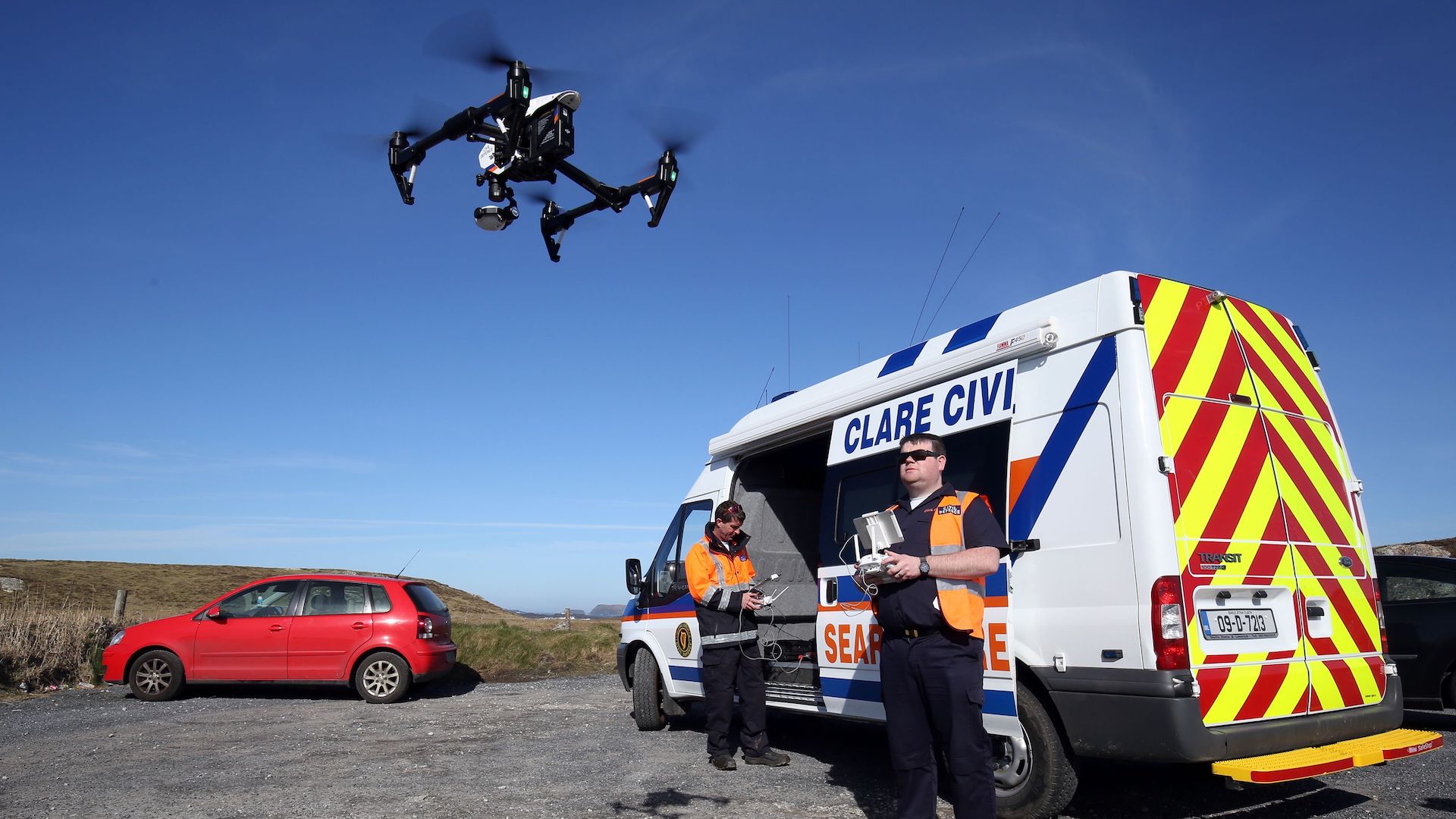

The Royal National Lifeboat Institution and the Maritime & Coastguard Agency are currently undergoing a drone trial testing period at St. Athan in South Wales. The trial phase began on Monday and will conclude Friday, with the primary focus concerning the unmanned aerial vehicle’s effectiveness in shoreline searches, search and rescue operations, and mud rescues.
According to the BBC, around 190 people die on U.K. and Irish coasts every year, a statistic presumably motivating lawmakers and first responder organizations to seriously consider implementing drones into the limited preventative strategies. Through the most rudimentary implementation of UAVs, drones could provide a bird’s-eye view to those on the ground (or on the water), and offer vital data that could help drastically decrease these yearly fatalities.
Aviation Technical Assurance Manager at the MCA, Phil Hanson, said UAVs could play “a crucial role” if testing goes well, but that drones would not entirely substitute conventional rescue methods. “It’s too early to comment on how we will move forward from the trials, but one thing we all agree on is that drones cannot replace helicopters, coastguard rescue teams or lifeboats,” he said. “However, it is entirely possible that they could be an additional tool to use in search and rescue.” Welcoming sophisticated drone tech to the conventional set of lifesaving tools is certainly a logical approach, which has already proven effective in other parts of the world.
In the aftermath of Hurricane Harvey, drones allowed for more accurate assessment of the scale of devastation. After identifying the Austin bombing suspect’s residence, drones were deployed to secure the premises from any threats before authorities continued their investigation. A man’s life was saved by a drone’s ease of use, after he was left stranded in the flooded James River.
RNLI’s Hannah Nobbs said that this week’s testing period has been brewing for two years, and that the institution is always open to new technology to improve and refine its operations. “The RNLI has a proud history of embracing new technology – from cork lifejackets in the 1800s to the design and build of our waterjet-propelled Shannon class lifeboat,” she said. “So it’s very exciting for us to now explore the potential use of drones in search and rescue activity.”
UAVs are affordable, sophisticated, and easy to use, and hence, increasingly part of the strategies and methodologies employed by emergency crews. Hopefully, Wales begins using them to its advantage sooner, rather than later.